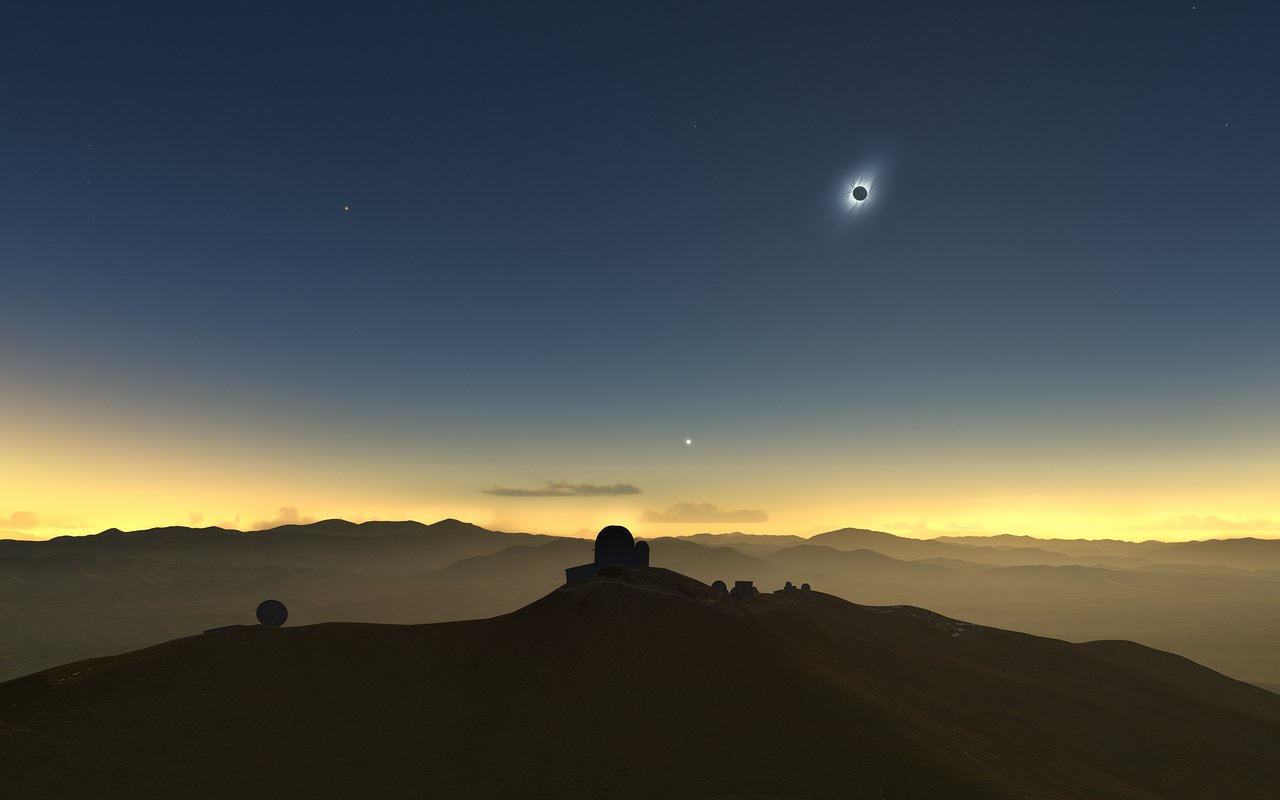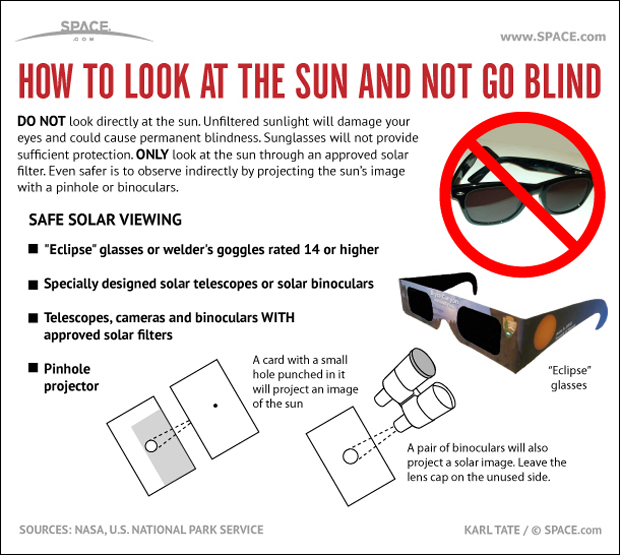Total Solar Eclipse 2019: Video Streams and Webcasts to Watch Live
Not in the path of totality? Here's how you can watch the eclipse from home.

The Great American Solar Eclipse of 2017 captivated the country, and now, another cross-continental total eclipse is expected to occur less than two weeks from today.
On July 2, the moon will once again pass in front of the sun, temporarily turning day into night over a 125-mile-wide (200 kilometer) path that stretches from coast to coast across Chile and Argentina. Neighboring countries including Uruguay, Paraguay, Brazil and Ecuador can see a partial eclipse, with the moon blocking only a portion of the sun's disk in the sky.
Solar eclipses have dazzled civilizations for millennia. Often they've been immortalized in glyphs, paintings or film, but the digital age offers its own unique point of access. If you aren't lucky enough to witness this solar eclipse in person, don't worry — you can still watch it via a number of webcasts from the comfort of your own home! Check out any one of these live webcasts below to see the total solar eclipse.
Related: Solar Eclipse Guide 2019: When, Where & How to See Them
Viewers have several different webcasts to choose from, and many offer expert commentary and highlights from the 2017 total solar eclipse. The staff here at Space.com will be updating this list with new webcasts as they are announced.
Visit the Space.com home page for live eclipse views — but read on to choose from more livestream options.
ESO, a collection of telescopes whose abbreviation is short for European Southern Observatory, will air a raw feed of the total solar eclipse from the Atacama Desert in Chile. This livestream won't include commentary, but it will switch between sources to show the views seen by three telescopes. Bad weather or poor internet connection could change that, ESO officials said in a description of the webcast. But there's a 40% chance of a totally clear sky, they said, and new measures should provide sufficient broadband connection in anticipation of the spectators that might tune in for the eclipse.
Get the Space.com Newsletter
Breaking space news, the latest updates on rocket launches, skywatching events and more!
The ESO website is available in Spanish, Portuguese and over a dozen other languages. ESO's webcast will begin at 3:15 p.m. EDT (1915 GMT), or 1 hours and 24 minutes before totality, and the live views will continue until the eclipse ends. You can watch it at eso.org/public/live or on YouTube.

Slooh, a skywatching streaming service, will webcast the total solar eclipse with commentary by astrophysicist Paige Godfrey. The views will come from Slooh's telescope partners in Chile, according to the description on the Slooh website.
This webcast is available here for free. Slooh also offers a paid membership for $20 per month with additional services. Highlights from the 2017 total solar eclipse are also included in the programming. The webcast is scheduled to begin at 3:15 p.m. EDT (1915 GMT), and you can watch it here on Slooh.com.
Exploratorium, a science museum in San Francisco, California, will be celebrating the total solar eclipse alongside the 50th anniversary of the Apollo 11 moon landing during ''Moon Month.'' Solar eclipses are made possible by the moon, after all, as the natural satellite passes between Earth and the sun at just the right spot. Coverage will be broadcast from the Cerro Tololo Observatory in Chile, and is available to stream online here and through the museum's eclipse app.
Visitors to the museum on that day will also have access to presentations about the solar eclipse by staff educators and a ''data-driven sonification'' performance by composer Wayne Grim, according to a ''Moon Month'' Exploratorium description. Museum programming will be available in English and Spanish.
Virtual Telescope will be livestreaming the eclipse from Chile's Atacama Desert in partnership with the Exploratorium and the European Southern Observatory. The webcast will begin at 3 p.m. EDT (1900 GMT).
TimeAndDate.com is a great source for solar and lunar eclipse information. The website includes detailed maps that show where the partial and total solar eclipse will be visible throughout South America. Beyond the path of totality, the moon will appear to take a bite out of the sun and never block it entirely. Viewers in Ecuador, Brazil, Uruguay and Paraguay might especially benefit from the information on this website, which details the partial eclipse.
TimeAndDate.com will livestream the eclipse on YouTube beginning at 3 p.m. EDT (1900 GMT). Their webcast will feature live telescope views of the eclipse as well as the crowds of spectators watching it from South America, and experts will provide live commentary.

Viewing the sun directly is dangerous; the naked eye can only view an eclipse safely during the moments of totality, when the body of the sun is completely blocked by the moon. Webcasts allow you to enjoy the eclipse safely without protective solar glasses, so take advantage and keep your eyesight intact!
Editor's Note: If you snap an amazing picture of the July 2, 2019 total solar eclipse and would like to share it with Space.com's readers, send your photos, comments, and your name and location to spacephotos@space.com.
This story has been corrected to reflect that the Slooh solar eclipse webcast is free.
- Last Solar Eclipse of 2018 Shines In These Awesome Photos
- Partial Solar Eclipse Spotted from Tasmania (Photo)
- Great American Solar Eclipse of 2017: Your Amazing Memories
Follow Doris Elin Salazar on Twitter @salazar_elin. Follow us on Twitter @Spacedotcom and on Facebook.
Join our Space Forums to keep talking space on the latest missions, night sky and more! And if you have a news tip, correction or comment, let us know at: community@space.com.

Doris is a science journalist and Space.com contributor. She received a B.A. in Sociology and Communications at Fordham University in New York City. Her first work was published in collaboration with London Mining Network, where her love of science writing was born. Her passion for astronomy started as a kid when she helped her sister build a model solar system in the Bronx. She got her first shot at astronomy writing as a Space.com editorial intern and continues to write about all things cosmic for the website. Doris has also written about microscopic plant life for Scientific American’s website and about whale calls for their print magazine. She has also written about ancient humans for Inverse, with stories ranging from how to recreate Pompeii’s cuisine to how to map the Polynesian expansion through genomics. She currently shares her home with two rabbits. Follow her on twitter at @salazar_elin.









